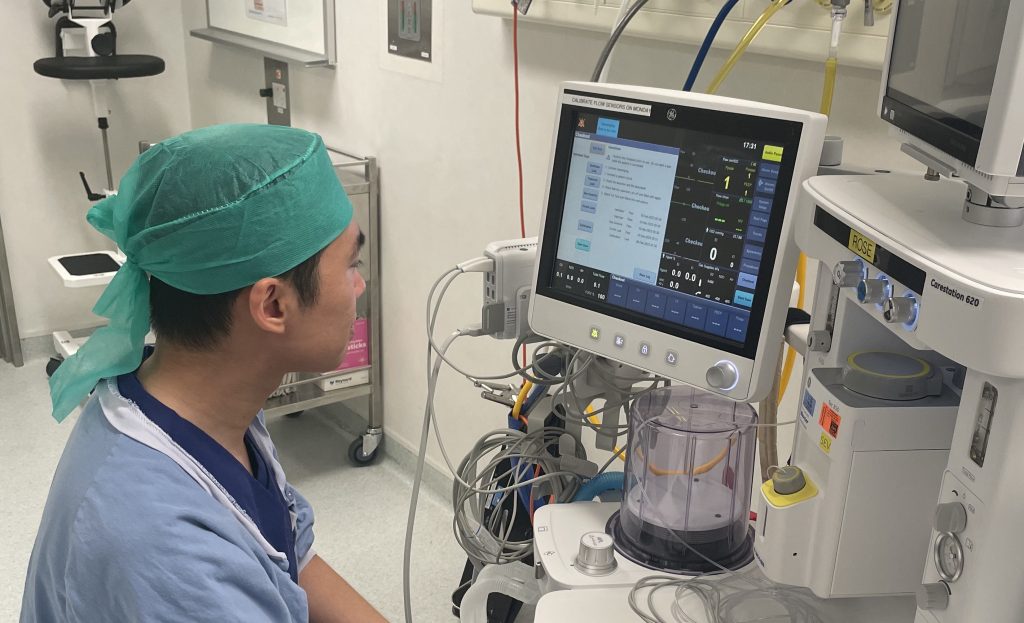Several hospitals in Australia have demonstrated large leaks of nitrous oxide that were not detected by the routine inspections required by Section 6 of Australian Standard 2896:2021. As N2O is a schedule 4 drug and significant greenhouse gas, any such leakage is unacceptable.
There are two ways to detect a leak: monitor pressure or weight of the nitrous cylinders. We have developed protocols for testing both.
Pressure Drop
We have developed a protocol for hospitals to test the entire pipeline system over a four hour period of zero demand. That means that during the test, alternative methods of administering N2O will be required (eg: entonox cylinders or N2O cylinders). The same principles and process can be applied to testing a ‘zone’ of a hospital. The protocol is based on the same principles used to commission a newly installed pipeline and go above the maintenance inspections required by AS 2896.

Download the Nitrous Oxide Pipeline Leak Test Protocol here (Pressure Test)
Weighing Cylinders to Detect Nitrous Leak
For some services, committing to a period ‘zero usage’ of nitrous for purpose of measurement may be unfeasible. The pressure test protocol tells you there is a leak but not how much. Adjusting the nitrous supply to be only from a single cylinder is required.
If you have any suggestions on how to improve these test protocols, please let us know. Similarly if you’ve had some success in using the protocols, let us know as well!

